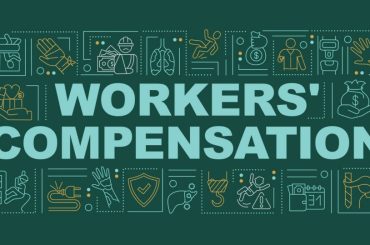Introduction
Severance agreements are critical elements in the employment landscape, particularly for workers transitioning out of a company, whether through retirement, layoffs, or other circumstances. Essentially, these agreements outline the terms under which an employee will leave the company, often including compensation and benefits offered by the employer in exchange for the employee’s departure. While severance agreements are significant for all departing employees, they hold particular relevance for workers over 40. This age group faces unique challenges and considerations, such as nearing retirement age or potentially encountering age-related biases in re-entering the job market.
For workers over 40, the Older Workers Benefit Protection Act (OWBPA) plays a crucial role in ensuring fairness and adequate protection in severance agreements. This legislation, part of the Age Discrimination in Employment Act (ADEA), sets specific standards and requirements for severance agreements to safeguard older workers from discrimination and to ensure that their rights are fully respected during the severance process. Under the OWBPA, certain legal stipulations must be met for a severance agreement to be considered valid and enforceable, especially when it involves the waiver of rights related to age discrimination claims.
The intersection of severance agreements and the protections afforded by the OWBPA highlights the importance of understanding these legal instruments and the rights they are designed to protect. For workers over 40, navigating this terrain with knowledge and awareness is essential for ensuring fair and equitable treatment in the concluding phases of their employment journey.
Understanding Severance Agreements
A severance agreement is a contract between an employer and an employee that outlines the terms of the employee’s departure from the company. This agreement typically comes into play when an employee is laid off or retires, although it can also be used in other scenarios, like mutual separations or resignations. The primary purpose of a severance agreement is to provide a clear, mutual understanding of the conditions surrounding the employee’s exit from the organization.
Typically, the components of a severance agreement include:
- Severance Pay: This is often the core element, where the employer agrees to provide the departing employee with a certain amount of money. The amount can be based on factors like the employee’s length of service, position, and salary.
- Benefits Continuation: The agreement may include terms for the continuation of certain benefits, such as health insurance, for a specified period after employment ends.
- Non-Disparagement Clauses: These clauses require both the employer and the employee to refrain from making negative statements about each other.
- Confidentiality: The employee may be required to keep the terms of the agreement and company information confidential.
- Release of Claims: The employee agrees not to pursue legal action against the employer for issues related to their employment or termination.
- Non-Compete and Non-Solicitation Clauses: These sections restrict the employee’s ability to work with competing firms or solicit clients or employees from the former employer for a certain period.
The general purpose of a severance agreement is to provide closure and clarity for both parties. For the employer, it offers a degree of legal protection, as the agreement often includes a release or waiver of liability for issues like wrongful termination claims. It also helps maintain a positive company image and can prevent the dissemination of confidential information.
For the employee, the benefits of a severance agreement often go beyond the immediate financial compensation. The agreement can offer a buffer period of financial security during the transition to new employment, continuation of benefits, and potentially valuable references or letters of recommendation. It also provides peace of mind, knowing that certain legal and financial aspects of their departure are settled.

Legal Protections for Workers Over 40
The Older Workers Benefit Protection Act (OWBPA), part of the larger Age Discrimination in Employment Act (ADEA), plays a crucial role in safeguarding the interests of workers aged 40 and above, particularly in severance scenarios. The OWBPA provides specific protections to ensure that older workers are not coerced into waiving their rights unknowingly or unfairly, especially in the context of age discrimination.
This act ensures that severance agreements for older workers meet certain criteria to be legally binding, particularly when they include a waiver of rights to file age discrimination claims. Age discrimination laws, including the ADEA, prohibit employment discrimination based on age, and the OWBPA reinforces these protections in the context of severance agreements.
Key Requirements of Severance Agreements for Workers Over 40
Under the OWBPA, severance agreements must adhere to specific requirements:
- Timeframes for Consideration and Revocation: The OWBPA mandates that workers over 40 must be given a reasonable time, typically 21 days, to consider the severance offer. Additionally, after signing, they have a 7-day revocation period during which they can change their mind.
- Clarity and Comprehension: The agreement must be written in clear and understandable language, avoiding legal jargon, to ensure the worker fully understands what they are agreeing to.
- Voluntary Acceptance and Waiver of Rights: The act ensures that the acceptance of the agreement and the waiver of rights, particularly regarding age discrimination claims, are made voluntarily and knowingly.
Common Elements in Severance Packages for Older Workers
Severance packages for workers over 40 often include elements that cater to their specific stage in their career:
- Extended Benefits: This might include extended health insurance coverage and outplacement services to assist in finding new employment.
- Considerations for Pension and Retirement Plans: The packages might address issues related to the worker’s pension or retirement plans, ensuring that their financial future is secure.
Negotiating Severance Agreements
Older workers should approach the negotiation of severance agreements with certain strategies:
- Understand the full value of the package, including health benefits and retirement plans.
- Seek clarity on any non-compete or non-solicitation clauses that might limit future employment opportunities.
- Consider engaging legal counsel to review and negotiate the agreement terms, ensuring they align with the worker’s best interests.
Case Studies or Examples
Real-world examples provide insight into how these agreements are handled:
- A case study could illustrate a worker over 40 who successfully negotiated additional benefits or challenged an unfair clause in their severance agreement.
- Another example might demonstrate the consequences of not adhering to the OWBPA guidelines, emphasizing the law’s importance.
Conclusion
This article has comprehensively explored the critical aspects of severance agreements, particularly for workers over 40, who are afforded specific protections under the Older Workers Benefit Protection Act (OWBPA). We began by defining severance agreements and discussing their typical components, emphasizing their mutual benefits for both employers and employees.
A key focus was placed on the legal protections provided by the OWBPA, which ensures that older workers are not disadvantaged in severance scenarios, especially concerning waivers of rights related to age discrimination. We delved into the OWBPA’s requirements for severance agreements, including mandatory timeframes for consideration and revocation, the necessity for clear and comprehensible language, and the importance of voluntary acceptance of these agreements.
Additionally, we highlighted common elements in severance packages tailored for older workers, such as extended benefits and considerations for retirement plans, and provided guidance on how to negotiate these agreements effectively. The role of legal counsel in this process was underscored as invaluable, ensuring that the rights and interests of older workers are thoroughly protected and represented.
In conclusion, understanding one’s rights under the OWBPA and the broader scope of age discrimination laws is paramount for workers over 40 facing severance. The value of informed legal advice cannot be overstated in these situations, as it can significantly impact the fairness and adequacy of severance agreements. For older workers navigating the complexities of severance, awareness, and proactive engagement with legal expertise are key to ensuring equitable treatment and securing their professional and financial futures.




